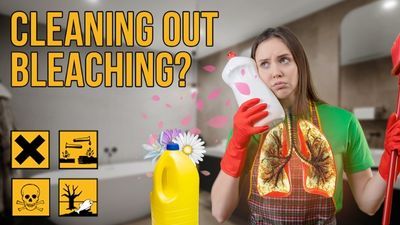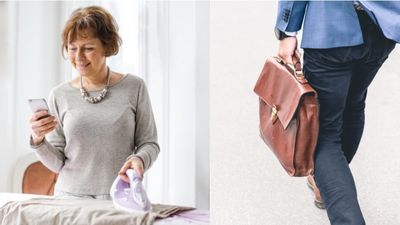General
The domestic environment is usually considered to be safe compared to other environments such as factories. This is not correct, and in this article we will focus on the health risks caused by cleaning solutions (chemical agents).
A Dangerous cycle
The domestic cleaners are locked in a dangerous cycle that forces them to use more & more chemical agents. Imagine the following. An Employer gets into his house or office after cleaning and says, “Was this room/office cleaned?”. Domestic cleaners get used to this and use more chemical agents to make it obvious that they did the work.
The risk is not limited to the domestic cleaner. While the cleaner gets the highest exposure it does not stop there. The second to get poisoned are the residents of the house or office. After that the dangerous chemicals are going to our air and environment and contaminating our food and water.
Chemical agents used at home
So, let’s start by listing some of the typical agents used when cleaning our houses and offices:
- Air fresheners
- Chlorine bleach
- Detergent and dishwashing liquid
- Rug and upholstery cleaners
- Oven cleaners
- Bleach (hypochlorite)
As the list is long in this article we will focus on bleach as this is the most widely used chemical agent. The chemical agent in bleach is hypochlorite that is added in different concentrations ranging from 0.7% to 5.25%. The rest of the content is mostly water.
Studies in the field have demonstrated the risks to which the cleaner is exposed, As the employer is touching the liquid and breathing the vapors of the bleach, he is exposed to the following risks:
- Irritation of the skin, nose and throat.
- Stomach irritation.
- Prolonged nausea.
- If swallowed - esophageal injury.
Many people are not aware of the great danger of mixing chlorine bleach with any other household cleaning products, especially ones that contain ammonia. Researchers have found that doing so releases poisonous gasses (Formaldehyde) that cause serious respiratory problems. Formaldehyde is also known to cause cancer.
Reducing the risk
We will further discuss methods to reduce the risks and exposure for the domestic cleaners and residents. We would like to give some small tips:
- Prefer alternatives
- Use soap and water.
- Use smaller amounts, educate your employers.
- Never (!) mix products (Especially Ammonia containing products).
- Vent your working area.
- Wear goggles and gloves and cover your skin.
Check less-harmful products to consider
Our personal story
Our experience with our own home cleaner is frustrating in this aspect. She has been working for us for the last 20 years and is part of our family in many ways.
As she is serving many families for so many years she got used to the requirement to use significant amounts of bleach when cleaning. She is actually arguing that using bleach is important to our health and does not accept the idea that it risks her health.
This is the reason why we are using DoEmploy as a platform to bring this message to domestic cleaners and to make them aware of this health risk.
Summary
The risks to domestic cleaners are very significant but can be reduced by having the knowledge. In this article we have concentrated on the risks of bleach (hypochlorite) and suggested methods that can reduce this risk. We will further dive into the ways to make the working environment of domestic employees in this series of articles.
References
Looking for more?
Run payroll, record hours, generate reports. Try for free, no credit card required.







